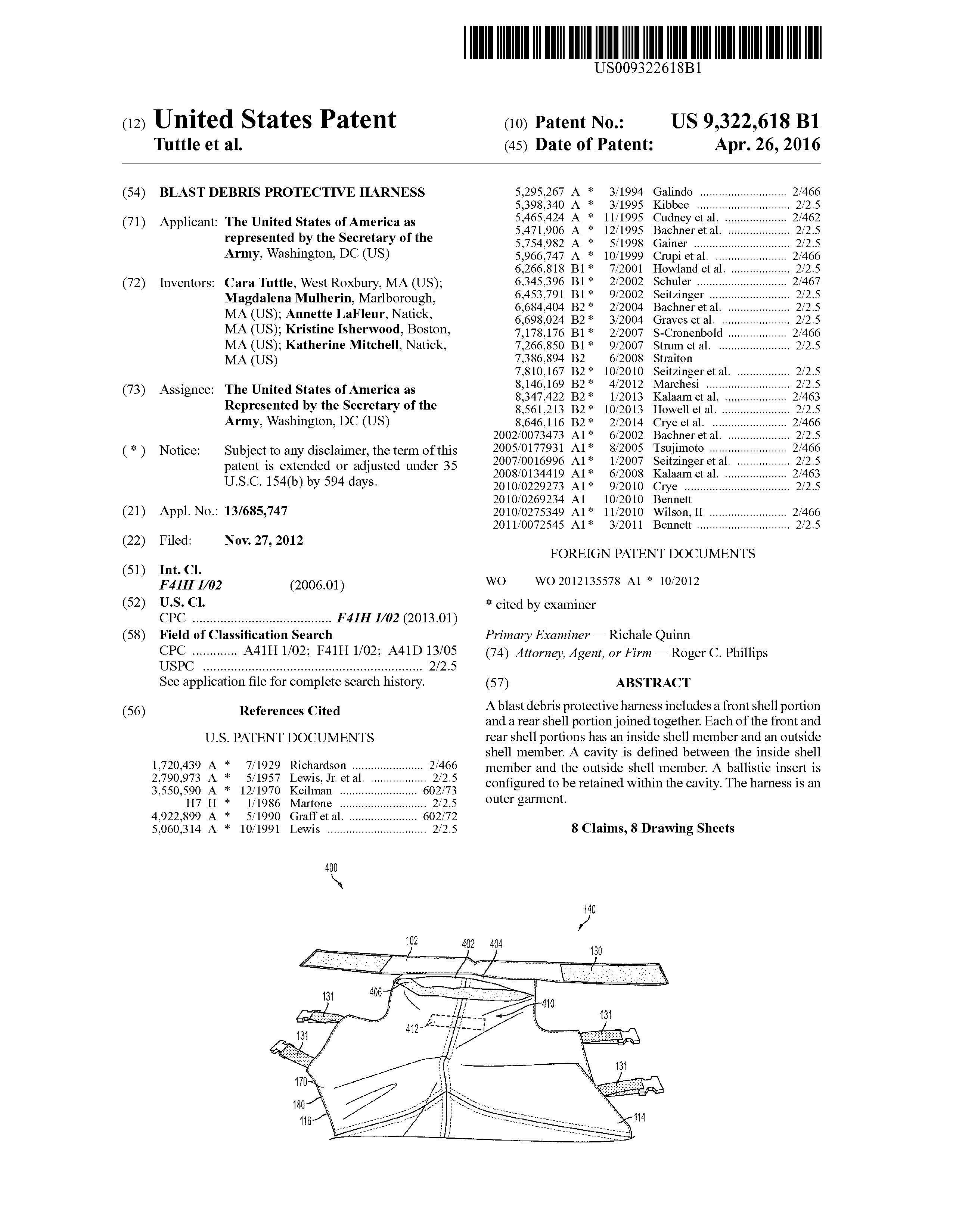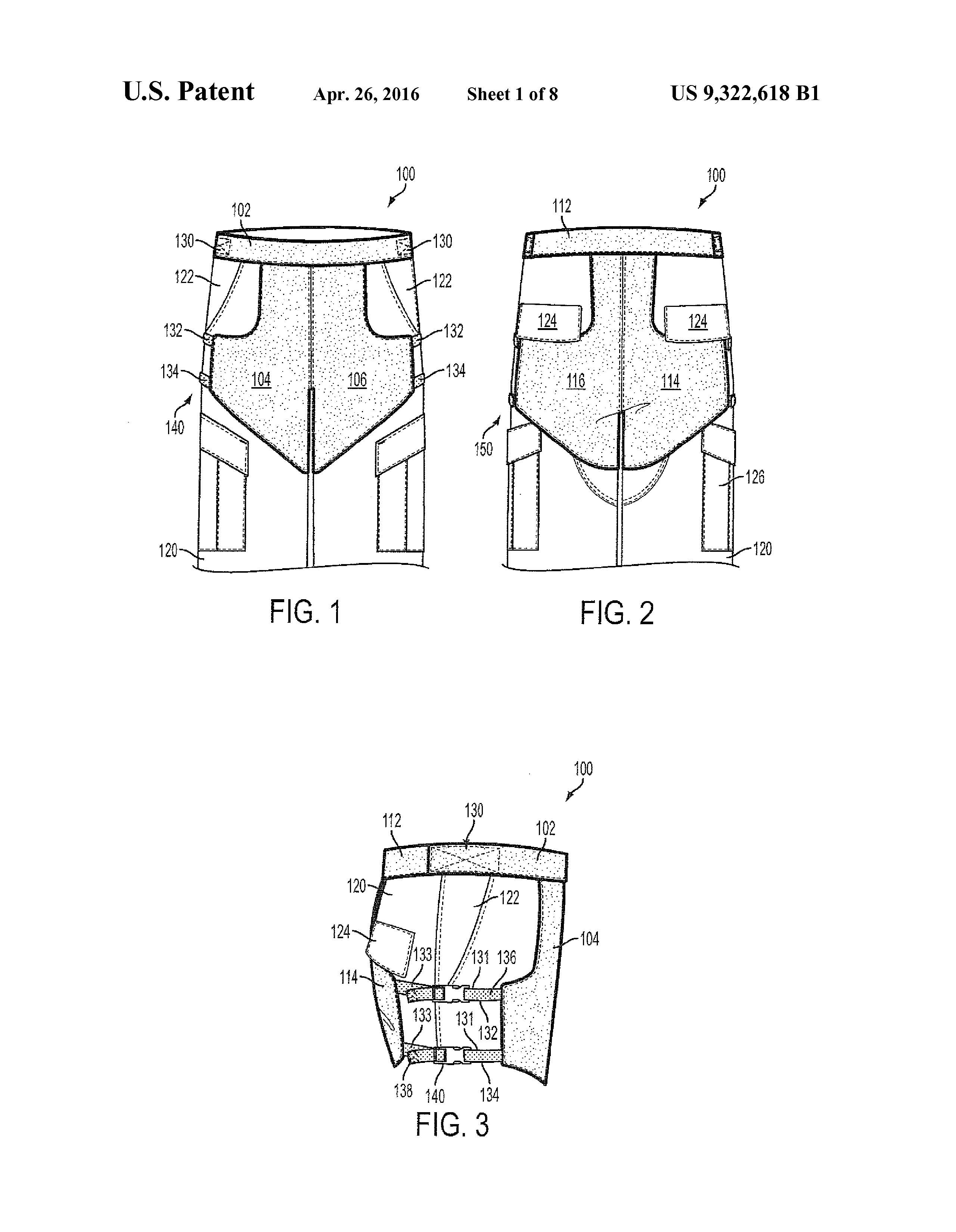
A new design has been patented by engineers and designers at the Army Natick Soldier Research, Development and Engineering Center (NDRDEC) that can potentially protect the wearer from blast debris, BLAST DEBRIS PROTECTIVE HARNESS (U.S. Patent No. 9,322,618).
The harness is designed to be worn outside the pants to protect the lower torso, specifically the lower intestine, lower spine, groin and the femoral artery, areas of the body that are vulnerable to injury from gunshots to shrapnel. Injuries that occur in these areas can be severe and require immediate medical attention as well as repeat surgeries to keep the wound clean and clear of debris and infection. In addition to the hygiene and health issues the harness can prevent, it also helps to provide fragmentation protection, injuries that can be obtained from artillery shell fragments.
Kristine Isherwood, project lead, noted the patented design for this harness came when an urgent operational needs statement was issued for blast debris protection. Cara Tuttle, an NSRDEC clothing designer said “The protection that existed before was letting debris in because it wasn’t fitted close enough to the body. Soldiers weren’t wearing it often enough, and it didn’t come down inside of the leg to protect the femoral artery.” The armor previously used was ineffective; when soldiers would kneel it would shift the armor leaving areas of the body exposed and at risk for dangerous injury.
 Several other options and prototypes were made and discussed prior to this design, some of those being an under-trouser, within-trouser, and over-trouser designs. The designers settled on this harness because its overlapping layers of Kevlar did not restrict movement or range of motion while it still remained snug to the body. “It was challenging to add layers and area of coverage without impacting movement,” said Isherwood. “Whether you had to climb in a window or kneel, [the harness] needed to stay in place, but also allow full range of motion. The uniqueness of this design is that it’s stable but moves with you.”
Several other options and prototypes were made and discussed prior to this design, some of those being an under-trouser, within-trouser, and over-trouser designs. The designers settled on this harness because its overlapping layers of Kevlar did not restrict movement or range of motion while it still remained snug to the body. “It was challenging to add layers and area of coverage without impacting movement,” said Isherwood. “Whether you had to climb in a window or kneel, [the harness] needed to stay in place, but also allow full range of motion. The uniqueness of this design is that it’s stable but moves with you.”
The harness design was also made with a soldier’s hygiene in mind. The separate pieces allow the soldier’s pants to be laundered separately from the protective equipment while still allowing the soldier to wear the harness rather than having the protection as part of the pants.
Another factor that was an issue when developing the harness was the “cool factor” according to Tuttle “[t]he shape of the design came about due to considering soldier acceptability. If something isn’t designed with this sort of ‘cool’ factor, then soldiers are less likely to wear it,” she said. “The factor that it looks like a harness and not a diaper, for instance, helps make it more acceptable to soldiers to wear.”
While this harness is crucial in protecting those men and women that are protecting this country, it will also have a profound effect on those first responders serving local communities as the harness may be licensed, in the future, for use by first responders.